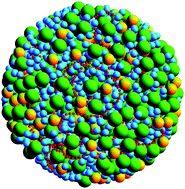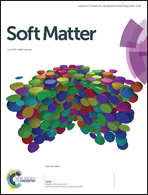A segregative phase separation scenario of the formation of the bacterial nucleoid
Abstract
The mechanism responsible for the compaction of the genomic DNA of bacteria inside a structure called the nucleoid is a longstanding but still lively debated question. Most puzzling is the fact that the nucleoid occupies only a small fraction of the cell, although it is not separated from the rest of the cytoplasm by any membrane and would occupy a volume about a thousand times larger outside the cell. Here, by performing numerical simulations using coarse-grained models, we elaborate on the conjecture that the formation of the nucleoid may result from a segregative phase separation mechanism driven by the demixing of the DNA coil and non-binding globular macromolecules present in the cytoplasm, presumably functional ribosomes. Simulations performed with crowders having a spherical, dumbbell or octahedral geometry highlight the sensitive dependence of the level of DNA compaction on the dissymmetry of DNA/DNA, DNA/crowder, and crowder/crowder repulsive interactions, thereby supporting the segregative phase separation scenario. Simulations also consistently predict a much stronger DNA compaction close to the jamming threshold. Moreover, simulations performed with crowders of different sizes suggest that the final density distribution of each species results from the competition between thermodynamic forces and steric hindrance, so that bigger crowders are expelled selectively from the nucleoid only at moderate total crowder concentrations. This work leads to several predictions, which may eventually be tested experimentally.



 Please wait while we load your content...
Please wait while we load your content...